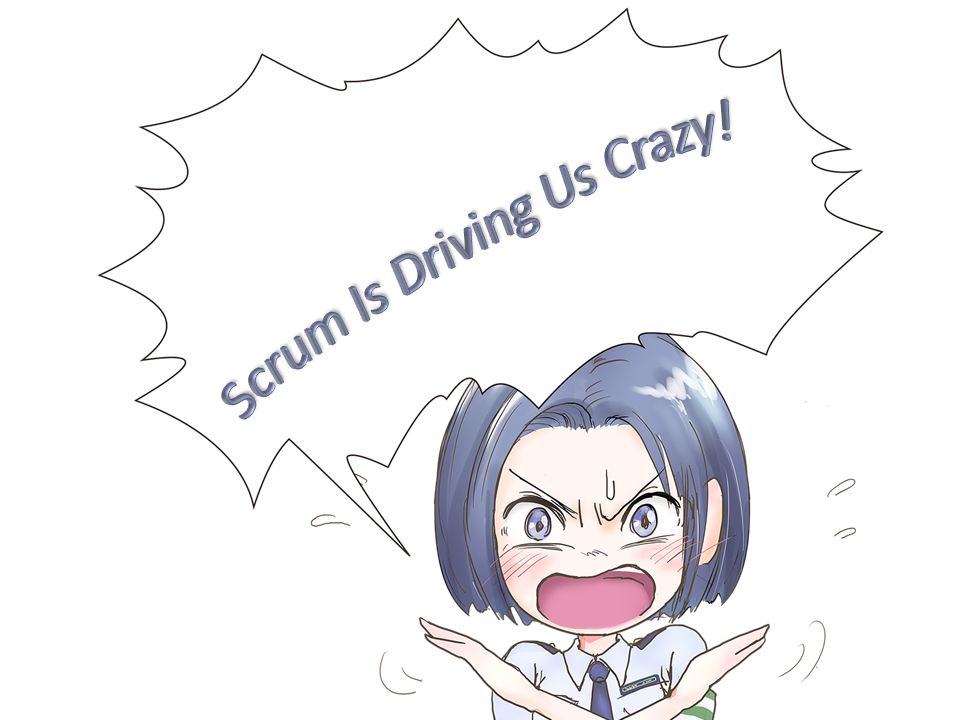Quite a few teams in organizations implementing Scrum depict their frustration in statements like “Scrum is driving us crazy!”, “It’s too chaotic!”, “As if we didn’t have enough meetings, now we have to deal with a ton more!”, “So many metrics we need to improve upon?!?”. With the discussion that follows, it becomes fairly apparent that problem lies elsewhere.

After discussing with people, it turns out that their frustrations are primarily surrounding complimentary practices which are not part of Scrum. Few examples –
- User Stories
- Velocity
- Planning Poker
- Story Pointing
- Burndown charts
- JIRA tool
- Information Radiators
These practices are meant to be leveraged when they help the team; if they aren’t helping, gladly skip them to avoid carrying unnecessary baggage. By avoiding these (if needed), you will be able to relieve the teams from most of the issues. Some of the problems I have witnessed – Maintaining separate virtual Sprint Backlog in JIRA as well as physical board [a classic Lean waste]; write every requirement and feature in User Story format [people are forced to do this and abuse the format]; forcing teams to increase their velocity sprint-over-sprint [read more on this here]; Burndown charts have to look smooth so we know that we are delivering value continuously [not true and unfair to the delivery teams].
Now let’s talk about what Scrum is about. For delivery teams and management, core of Scrum lies in these aspects –
- Moving away from long-term plans and working towards common, yet shared goals
- Delivering products iteratively through short, high value Sprints
- Be empirical in your approach by regularly inspecting artefacts, processes, tools, etc. and adapt based on evidence in your hands
- Engaging stakeholders often to gather valuable feedback about the product to assist in tactical change in direction, if needed
- Shifting from project mindset to product mindset
- Focus on delivering value to your customers rather than ‘keeping people busy’
- Help improve productivity of the team by removing impediments that stall them from meeting their goals
- Give control to the delivery team rather than managing or ‘micro-managing’ their tasks
- Building trust by living the 5 values of Scrum
- Looking for every opportunity to improve upon yourselves as a team and as individuals
Remember Scrum does not solve your problems, it just surfaces the dysfunctions that exist in your ecosystem and sometimes it can be overwhelming. So it will mean you need to unlearn some of the old habits (most of them die hard!) and will surely drive you crazy till you start reaping the benefits of Scrum.
